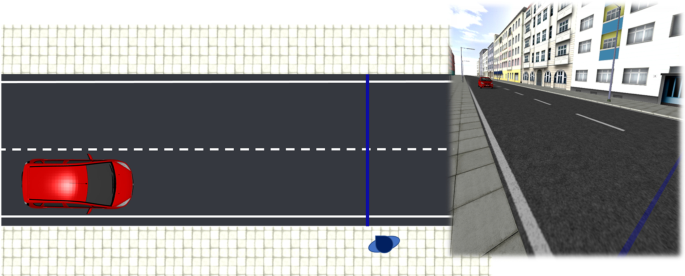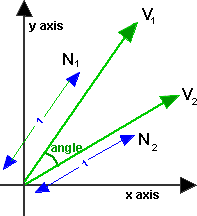

:type vert_coords: list of mathutils.Vector :arg vert_coords: Vertex coordinates (2d) Of the orig arrays, which may save some time.
VECTOR 2D LINE COLLISION CODE
If the need_ids argument is supplied, and False, then the code skips the preparation With the edges implied by each of the faces (n of them for an n-gon). Input element indices corresponding to the positionally same output element.įor edges, the orig indices start with the input edges and then continue The three returned orig lists give, for each of verts, edges, and faces, the list of Slightly, and may be merged with other nearby verts. The returned verts may be in a different order from input verts, may be moved Some triangles may be eaten away, or combined with other triangles, With edges and faces that must appear in the triangulation. delaunay_2d_cdt ( vert_coords, edges, faces, output_type, epsilon, need_ids = True ) Ĭomputes the Constrained Delaunay Triangulation of a set of vertices, Returns a list of indices into the list given Parameters Tri_p3 ( mathutils.Vector) – Third point of the triangle Tri_p2 ( mathutils.Vector) – Second point of the triangle Tri_p1 ( mathutils.Vector) – First point of the triangle Takes 4 vectors: one is the point and the next 3 define the triangle. closest_point_on_tri ( pt, tri_p1, tri_p2, tri_p3 ) Tuple, pair of floats mathutils.geometry. The width and height of the packed bounding box Return type Parametersīoxes ( list) – list of boxes, each box is a list where the first 4 items are other items are ignored. Returns a tuple with the width and height of the packed bounding box. Returns an angle that best fits the points to an axis aligned rectangle Parameters Tri_b3 ( mathutils.Vector) – target triangle vertex. Tri_b2 ( mathutils.Vector) – target triangle vertex. Tri_b1 ( mathutils.Vector) – target triangle vertex. Tri_a3 ( mathutils.Vector) – source triangle vertex. Tri_a2 ( mathutils.Vector) – source triangle vertex. Tri_a1 ( mathutils.Vector) – source triangle vertex. Point ( mathutils.Vector) – The point to transform. Return a transformed point, the transformation is defined by 2 triangles. barycentric_transform ( point, tri_a1, tri_a2, tri_a3, tri_b1, tri_b2, tri_b3 ) Returns the area size of the 2D or 3D triangle defined. The Blender geometry module mathutils.geometry. Geometry Utilities (mathutils.geometry)

Best Practice: Conventions to follow for writing good scripts.
VECTOR 2D LINE COLLISION HOW TO

In general, angular velocity is defined by a vector as
I've heard about that the Wedge product is working for this, and I've read many articles about it too, but I still don't understand how to use it, please help!Ī cross product will tell you both the magnitude and the sign of your angular velocity. So, I need a signed version of the initial velocity that also can be negative, how do I calculate that? Now since a square root can't be negative, this won't work when the ball is supposed to rotate anti-clockwise. This is how it simulates in my programming: (Click to change the balls position) I want to convert X and Y velocities to angular velocity, this is the formula I am currently using to calculate the initial velocity by the x and y values and then turn it into angular velocity for my circle object:Īngularvelocity = Squareroot of (Velocity x^2 + Velocity y^2) / Circle's radius This is originally a problem in programming, but since almost no one on Stackoverflow know how to solve this I went here instead


 0 kommentar(er)
0 kommentar(er)
